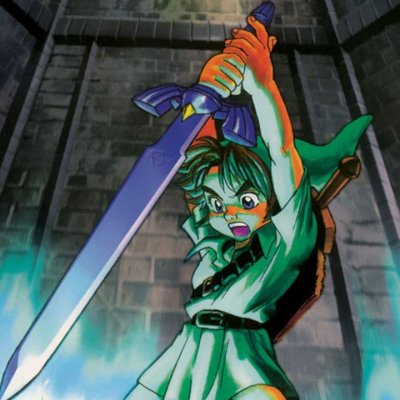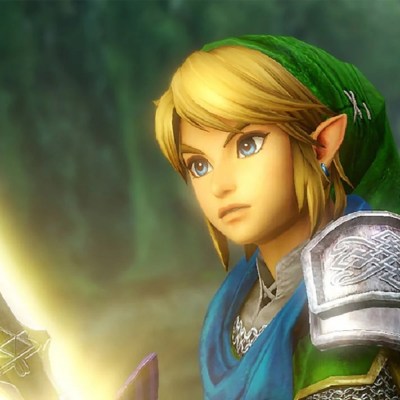15 Best Legend of Zelda Dungeons Ever
Every Legend of Zelda game challenges players with dungeons that are filled with enemies and puzzles, but some of those dungeons are simply among the best.
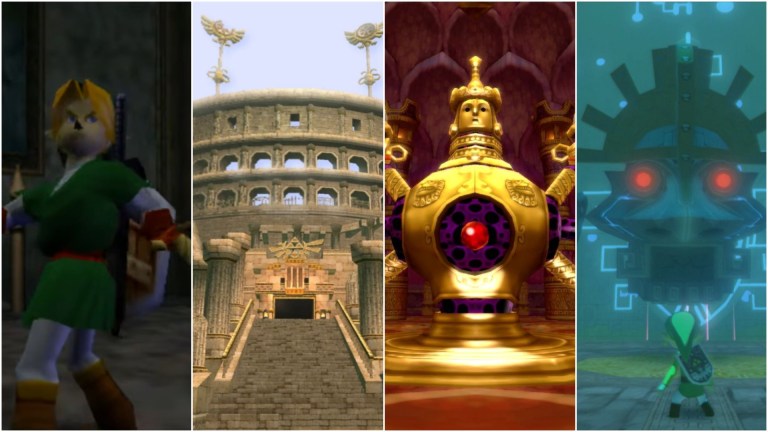
The Legend of Zelda franchise has been going strong for over 35 years. While there’s no one aspect of that incredible series that fans will agree they love the most, anyone who has played a Zelda game likely has fond memories of at least one of its dungeons.
Every Zelda game includes several dungeons. Each of those dungeons houses unique items that are necessary for future challenges, and most of those items are guarded by tough boss and mini-boss monsters that serve as their own setpieces. More often than not, Zelda dungeons are the highlight of each adventure. Just because they are the best portions of their own respective games, though, doesn’t mean all dungeons are created equal. Most of these puzzle and enemy gauntlets blend in with the rest of the considerable crowd, while others live on in infamy due to their bad design (you know what you did, Water Temple). Once in a blue moon, though, the Zelda level designers create something truly memorable that doesn’t just stand out from the rest of the dungeons in its own game; it stands out from the dungeons in the history of this legendary franchise.
Here are the 15 best dungeons in Zelda history.
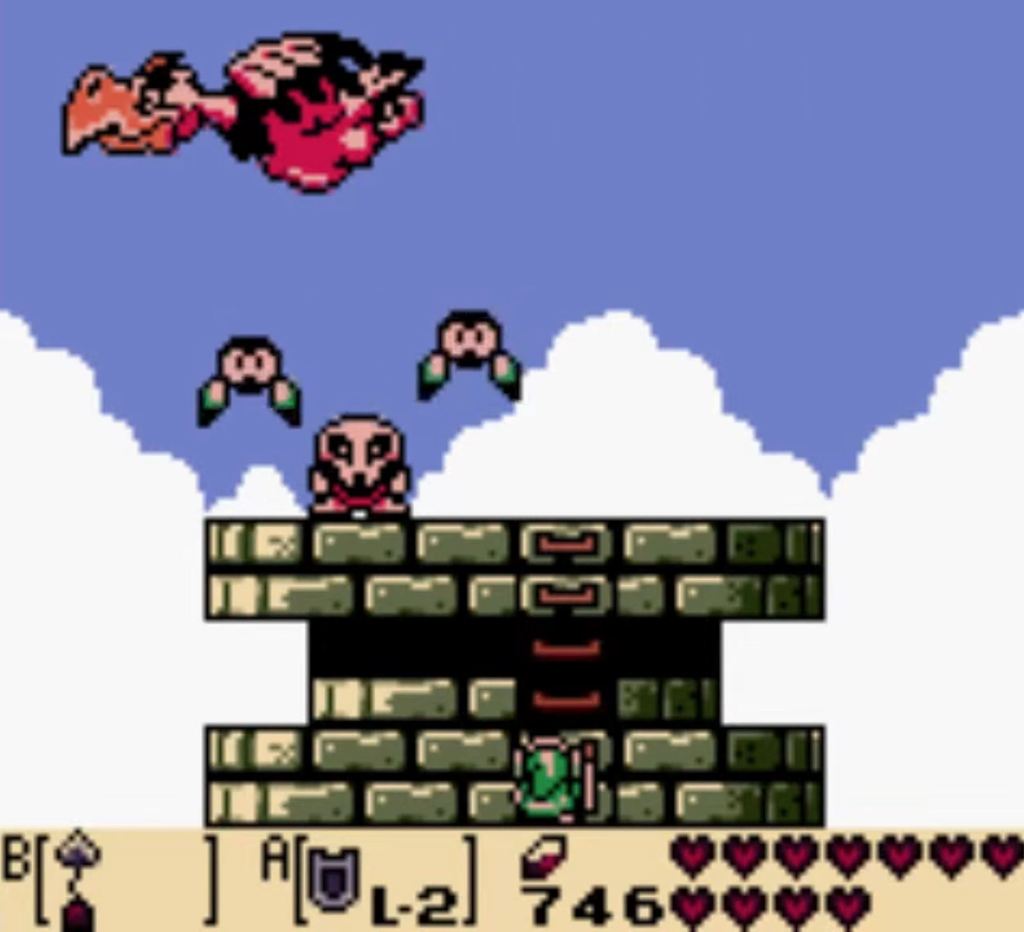
15. Eagle’s Tower (The Legend of Zelda: Link’s Awakening)
The Legend of Zelda: Link’s Awakening was the franchise’s first foray onto handhelds, so the game had to deal with (and overcome) the portable console’s obvious limitations. Most, if not all, of the game’s dungeons are visually simple, but some, such as Eagle’s Tower, make up for those slight shortcomings with some truly creative puzzles.
Eagle’s Tower is, as its name suggests, a tall tower with a giant eagle sitting at the top. Granted, that’s a little on the nose and conceptually obvious, but what isn’t obvious is how you reach the top. In a rare case of logical dungeon design, players can’t find a path to the boss because no such path exists. Instead, they have to create one.
In order to progress, gamers need to destroy several pillars that hold up the dungeon’s top levels. Many of Eagle’s Tower’s puzzles revolve around carrying the wrecking ball needed to demolish the pillars from point A to point B, and some of the paths forward are far from straightforward. Unlike other dungeons that rely on key hunting to open door after door, the key to Eagle’s Tower is lateral thinking,

14. Thieves’ Hideout (The Legend of Zelda: A Link Between Worlds)
Many Zelda dungeons follow a theme. Forest dungeons are covered in plants, desert dungeons are filled with sand, and fire dungeons are on fire. Usually, those are basically a paint job, but some dungeons go a step further.
Before you even step foot in the Thieves’ Hideout in The Legend of Zelda: A Link Between Worlds, you feel like you’re sneaking into a secret and secure thieves’ den. The only way in is by eavesdropping on NPCs to learn the answers to an entrance test (or by randomly guessing the same information). Once inside, the dungeon is full of booby traps and treasure, just like a real hideout would be. Thieves’ Hideout is also one of the rare cases of grandfathering in a boss from A Link to the Past without recycling that boss’ strategy, which can’t be said for Arrghus and Moldorm.
Admittedly, Thieves’ Hideout loses some points for being one big escort mission. Still, can you really blame a thief who wanted to steal from other thieves for wanting to escape?
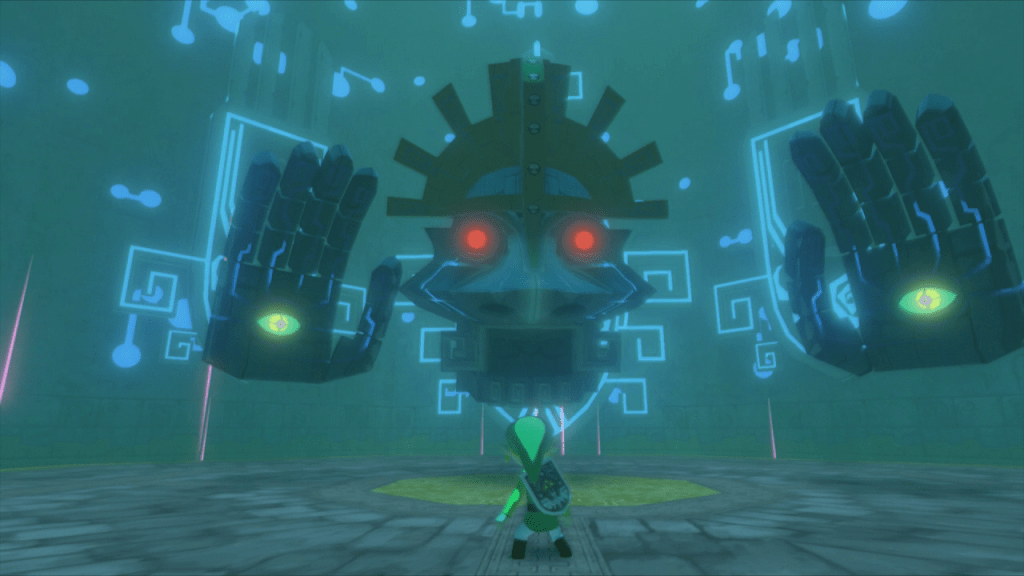
13. Tower of the Gods (The Legend of Zelda: The Wind Waker)
Sometimes you enter a Zelda dungeon simply by stumbling upon a wide-open door. But every now and then, a Zelda game makes players work for the right to enter.
The Legend of Zelda: Wind Waker’s Tower of the Gods delivers one of the best first impressions in the franchise. First, players have to collect three special pearls to unlock the dungeon. After that, the dungeon itself rises from the depths of the ocean like a majestic, ancient civilization unearthed by an Indiana Jones-style treasure hunter. Remarkably, the inside is just as impressive as the entrance.
At first, players have to switch between going on foot and relying on the King of Red Lions to navigate, but that’s not the dungeon’s only gimmick. Later, you have to lead statues, either by relying on pathfinding AI or directly controlling them, to open up new paths. Naturally, the Tower of the Gods caps off with a Nintendo tradition: A boss fight against a floating head and its two floating hands. Oh, and then the temple teleports players to the time-locked remains of old Hyrule.
The Tower of the Gods is all hype, all of the time.
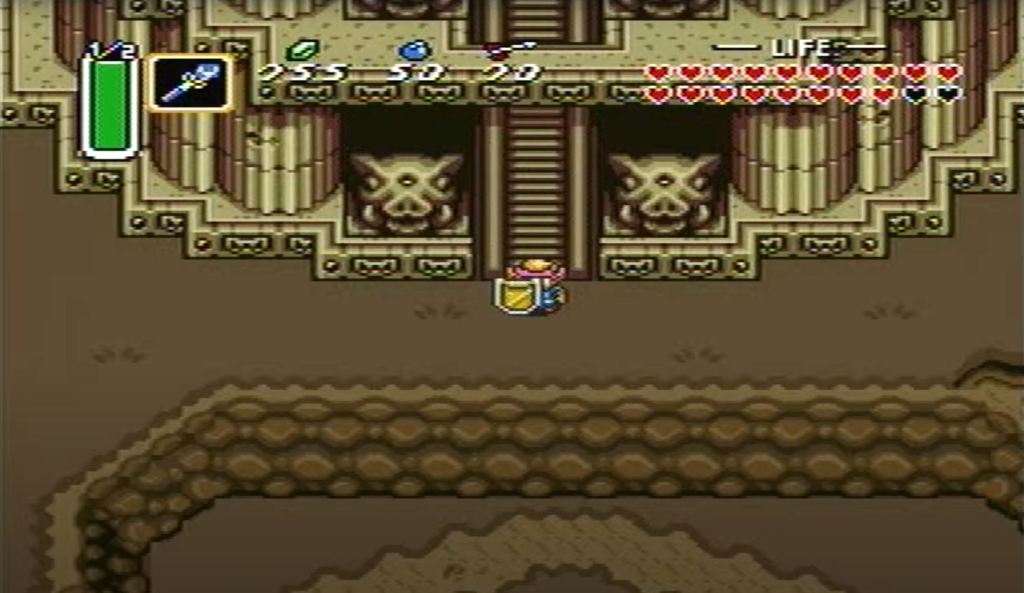
12. Ganon’s Tower (The Legend of Zelda: A Link to the Past)
Before players get to fight Ganon, Legend of Zelda games tend to quiz gamers on everything they learned throughout the adventure. Well, A Link to the Past really set the bar for that kind of exam.
Ganon’s Tower is the final dungeon in The Legend of Zelda: A Link to the Past that players need to clear. Inside, Ganon has collected challenges from across Hyrule. Not only are the rooms filled with enemies from other dungeons, but many puzzles are remixed versions of old ones. However, that is not where this dungeon’s true challenge lies.
In order to hype up the final boss, many video games like to run players through a gauntlet of old bosses. It’s a design tactic that effectively shows how far gamers have come, as they can now walk through creatures that used to give them trouble. Well, Ganon’s Tower forces players to fight all of the Light World bosses again, including a rematch against the dreaded sorcerer, Aghanim.
There are many Ganon’s Towers/Castles in Zelda games, but this still stands apart.
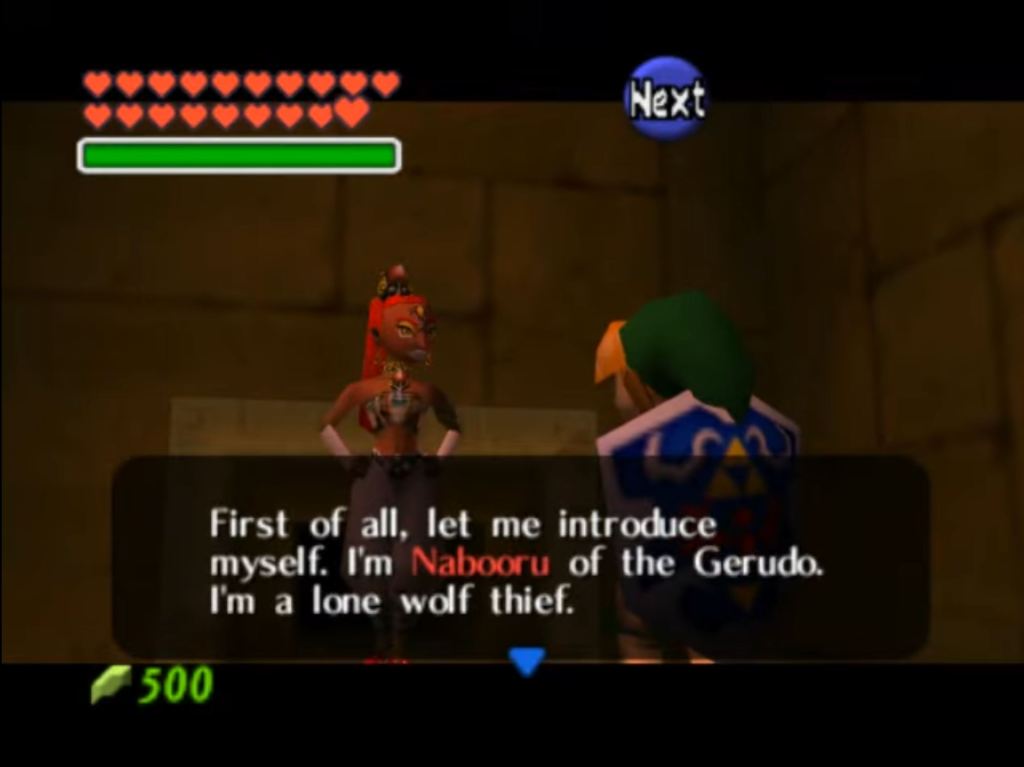
11. Spirit Temple (The Legend of Zelda: Ocarina of Time)
Time travel is a key mechanic in The Legend of Zelda: Ocarina of Time, but while players can access most areas as both child and adult Link, the same can’t really be said for dungeons, save for one incredible example.
On the surface, the Spirit Temple is desert-themed, but it is actually time-themed. While players need adult Link to find the dungeon, they need child Link to complete its first half. Not only does this give the Spirit Temple the honor of utilizing Ocarina of Time’s central mechanic, it also gave dungeon designers an excuse to cram two key items into the temple (a rarity in Zelda games).
Most bosses in Ocarina of Time are mindless creatures created or awakened by Ganondorf, but the Spirit Temple’s boss is something so much more interesting. Instead of fighting one of Ganondorf’s creations, players fight enemies that arguably created Ganondorf: the twin witches Koume and Kotake, who eventually combine to form Twinrova. These bosses are crucial to game lore and even get their own theme.
Because of its use of time travel, the Spirit Temple might as well embody the spirit of Ocarina of Time, pun possibly intended.
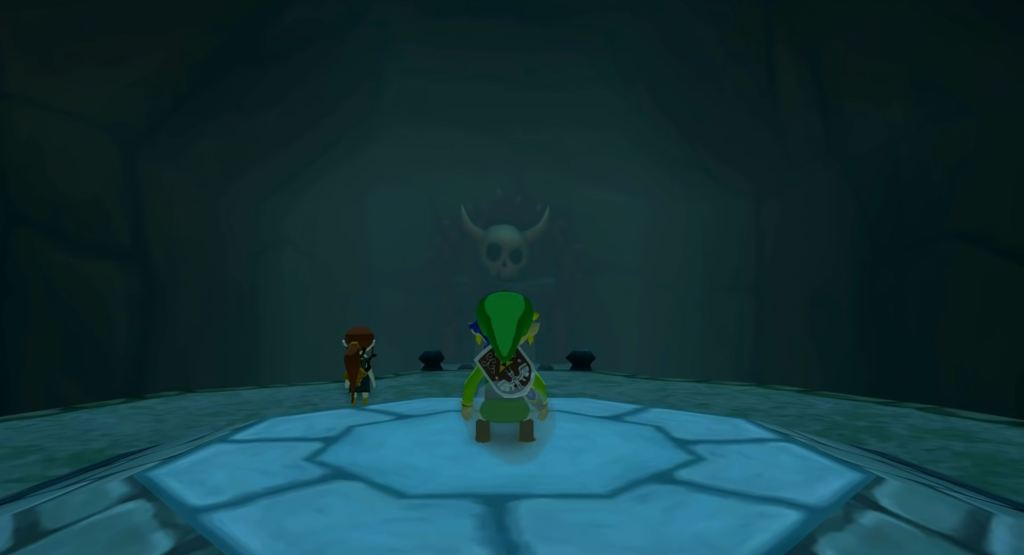
10. Earth Temple (The Legend of Zelda: The Wind Waker)
It’s a Legend of Zelda tradition to make at least one dungeon filled with undead creatures. Despite its cartoonish graphics, The Legend of Zelda: Wind Waker‘s version of that classic concept is just a bit creepier (and much more clever) than you might think it would be.
Despite being buried, Wind Waker’s Earth Temple relies on light. Many of the rooms require players to bounce beams off Link’s Mirror Shield to clear paths and activate switches. Better yet, players don’t have to tackle these alone; fan-favorite character Medli tags along, and she’s crucial to many puzzles. Since she’s a Rito, she can even fly over short distances and carry Link along with her. Plus, her harp can reflect light as well as Link’s Mirror Shield.
The Earth Temple also wins points for presentation. It looks like it used to be an actual place of worship that is now overrun by Stalfos and arguably the franchise’s creepiest undead, Redeads. That mood is driven home by the music, which switches between calming didgeridoos and wailing woodwinds.
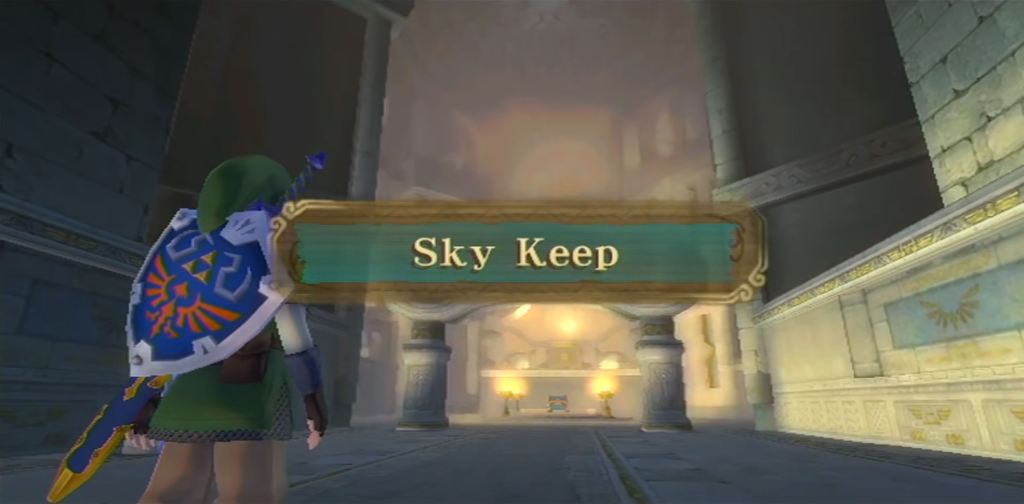
9. Sky Keep (The Legend of Zelda: Skyward Sword)
Most dungeons in The Legend of Zelda utilize puzzles that incorporate gimmicks, but what if an entire dungeon was built around such a gimmick?
In order to acquire the Triforce in The Legend of Zelda: Skyward Sword, players have to clear the Sky Keep. Unlike other dungeons, which are themed around one element each, the Sky Keep is themed around…well, the other dungeons. Each room in the Sky Keep draws from different dungeons, usually mixing and matching them. Unlike its inspirations (and many other Zelda dungeons), though, Sky Keep isn’t a key hunt.
What makes Sky Keep so special is that it is actually one big sliding puzzle. Players can (and have to) move rooms around to access new areas to properly navigate. The dungeon is so modular that players can actually skip some rooms if they slide their tiles correctly. Sky Keep even breaks from Zelda dungeon tradition by only featuring a mini-boss who holds the area’s sole key, with no proper “final boss” in sight.
While Sky Keep doesn’t benefit from a unique aesthetic, it more than makes up for that with a unique gameplay gimmick that has yet to be replicated.
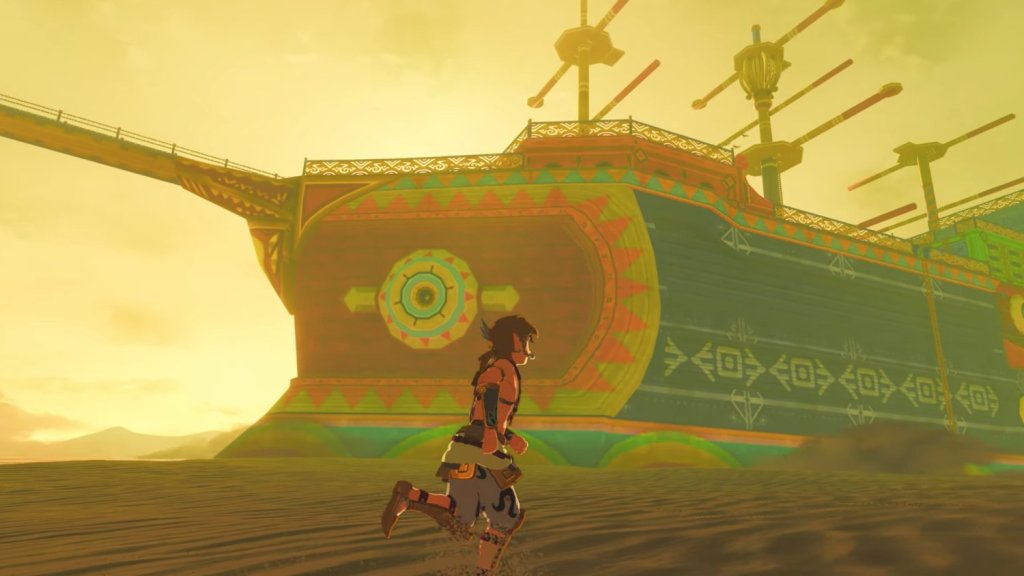
8. Sandship (The Legend of Zelda: Skyward Sword)
While The Legend of Zelda: Ocarina of Time’s Spirit Temple pioneered the idea of traversing a dungeon in different time periods, Skyward Sword’s Sandship arguably perfected that concept.
Before players can board the Sandship, the game asks you to hunt it down in an ocean of sand that soon turns into an ocean of water (thanks to a time crystal). After gamers scuttle the ship, the dungeon properly begins. At first, the Sandship starts off as a decrepit, sand-filled wreck, but once you find the bow, you can actually rewind time and see the ship at its prime. More importantly, players need to use the bow to navigate the dungeon’s many clever time-bending puzzles.
While the Sandship’s boss is widely regarded as a joke, its mini-boss is a sight to behold. Not only is the enemy a robot pirate, but he engages players in a one-on-one duel where the only way to win is to essentially stab him enough times until he walks the plank. The fight is thematically brilliant and simply awesome to boot. You just can’t go wrong with pirates.
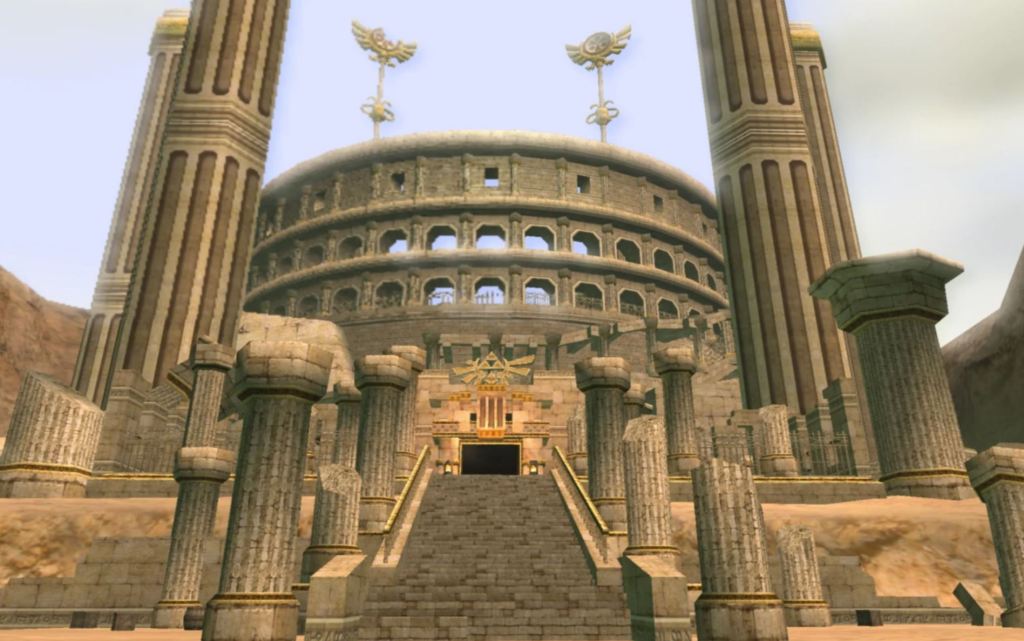
7. Arbiter’s Grounds (The Legend of Zelda: Twilight Princess)
The Legend of Zelda: Twilight Princess is easily the darkest and most mature entry in the franchise. Not only does the game sport a more realistic art style, but it is also the only T-rated game in the series. The developers took that slightly raised age rating as a challenge to produce one hell of a creepy dungeon.
The Arbiter’s Grounds is steeped in lore. Standing on the ruins of what used to be Gerudo lands, the dungeon was built to house the worst prisoners in Hyrule. They probably all died there, which would certainly explain the moving corpses. The Arbiter’s Grounds is full of undead enemies, including ghosts that only Wolf Link can see and track, making it the only dungeon that requires players to use both of Link’s forms.
Somewhat ironically, the Arbiter’s Grounds is home to one of the best and underutilized items in Twilight Princess: the Spinner. There’s just plain fun to whip the item out and use it to spin around Hyrule, but few areas outside of the dungeon actually use it. At least the dungeon ends in a two-stage fight against a giant skeletal dragon with some of the most hectic action and music in the game.
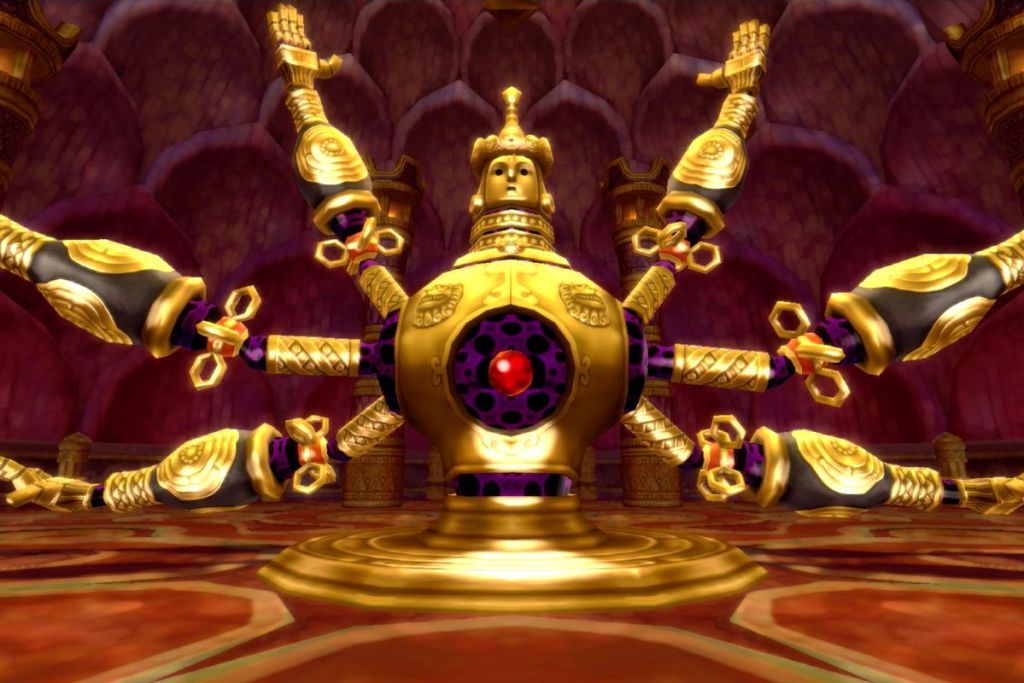
6. Ancient Cistern (The Legend of Zelda: The Skyward Sword)
Zelda games suffer from a curse: Water-themed dungeons are almost always bad. The Legend of Zelda: Skyward Sword is the only exception to the rule since it not only features a water dungeon that isn’t bad; it features a water dungeon that is one of its absolute best.
The Ancient Cistern is arguably one of the most beautiful dungeons in Zelda history. The entire level is decked out in Buddhist imagery that goes far beyond the obvious central Buddha figure. Gears look like lotus flowers, and one segment where players have to climb a rope while pursued by zombies (which is an awesome setpiece by the way) is ripped straight from folklore.
Admittedly, The Ancient Cistern is mostly known for its visual beauty, but it is a solid dungeon from a gameplay standpoint thanks to its lily pads and clever puzzles that rely on water streams. Plus, its boss, Koloktos, is regarded as a high point of the game, thanks in no small part to the catharsis of grabbing one of its giant swords and going to town on its weak point.
The Ancient Cistern is a simply fun dungeon that shows water dungeons aren’t necessarily destined to be awful.
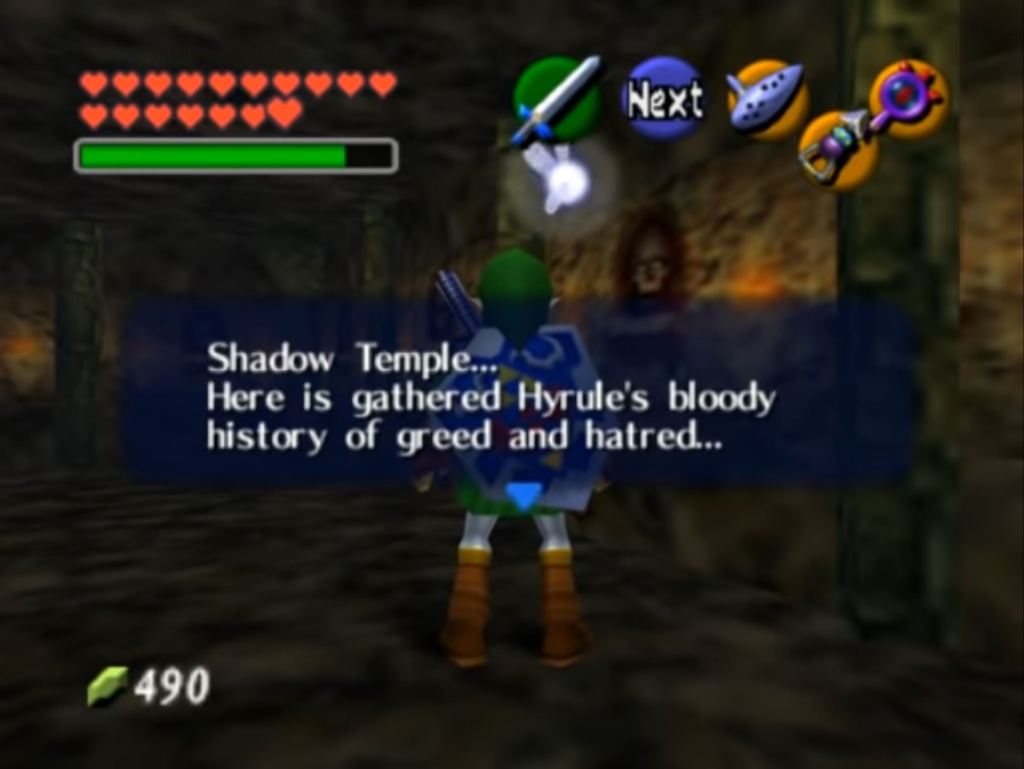
5. Shadow Temple (The Legend of Zelda: The Ocarina of Time)
In most video games, puzzles and dungeons rely on basic visual communication elements. What you see is what you get, but what happens when the dungeon lies to you? That was the central premise of the Shadow Temple in The Legend of Zelda: Ocarina of Time. Well, that and death.
The Shadow Temple is one of the most gruesome dungeons in the Zelda franchise. While the temple has plenty of undead enemies, it sets an almost pitch-perfect tone thanks to its creepy music and, most surprising of all, rooms filled with evidence of torture such as execution equipment that is caked in blood.
The biggest gimmick in the Shadow Temple is that players can’t trust their eyes. The level is filled with false walls, invisible bridges, and unseen traps. While players can see past these illusions with the Lens of Truth, the dungeon piles in so many obfuscated obstacles that players are bound to get paranoid. What happens when they run out of magic and can’t use that lens anymore?
Shadow Temple is a genuinely scary and disturbing part of your Ocarina of Time adventure that will linger with you for as long as your memories of that masterpiece remain.
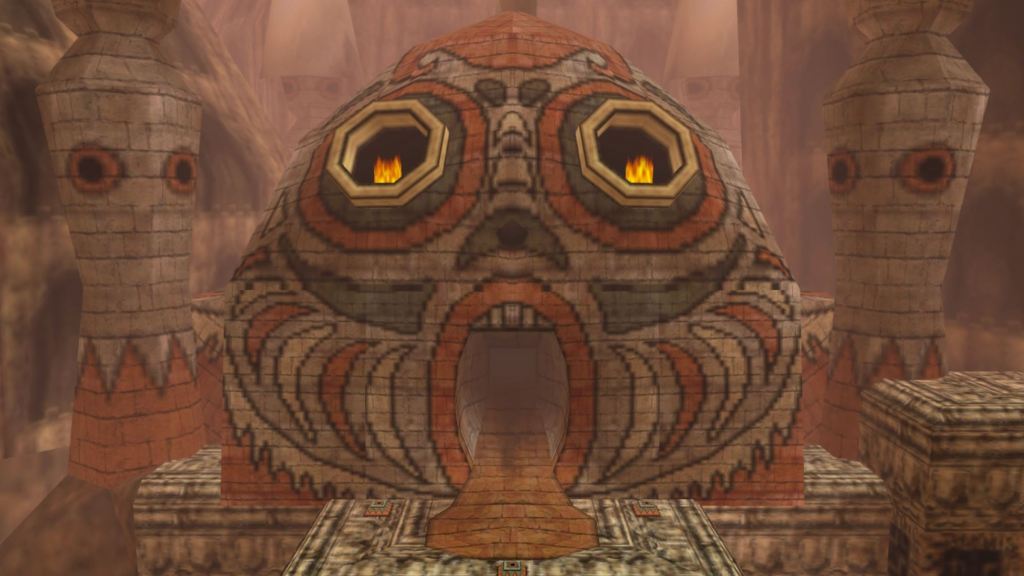
4. Stone Tower Temple (The Legend of Zelda: Majora’s Mask)
The Legend of Zelda: Majora’s Mask only has four dungeons to its name, but that’s because its designers were clearly focused on quality over quantity. The Stone Tower Temple exemplifies the benefits of that approach.
Before players can even reach the Stone Tower Temple, they have to climb…well, a tall stone tower. Once they reach the top, though, the challenge has only begun. Unlike other dungeons in Majora’s Mask, which usually rely on the abilities of a specific mask, the Stone Tower Temple regularly requires players to switch between all of them. One room might feature light-based puzzles that only normal Link can solve, while another might be covered in lava that only Goron Link can cross. Plus, many rooms feature switch puzzles that require players to create Link statues, and it’s not uncommon to have to swap between all of Link’s forms to solve them.
Halfway through the Stone Tower Temple, players are introduced to a new mechanic that allows them to flip gravity. The ceiling becomes the floor, and the floor becomes the ceiling, which opens up new locations and puzzle solutions. Put it all together, and you’ve got a dungeon that tests your ability to multitask like few others. Oh, and did I mention that you’re on a timer through it all?
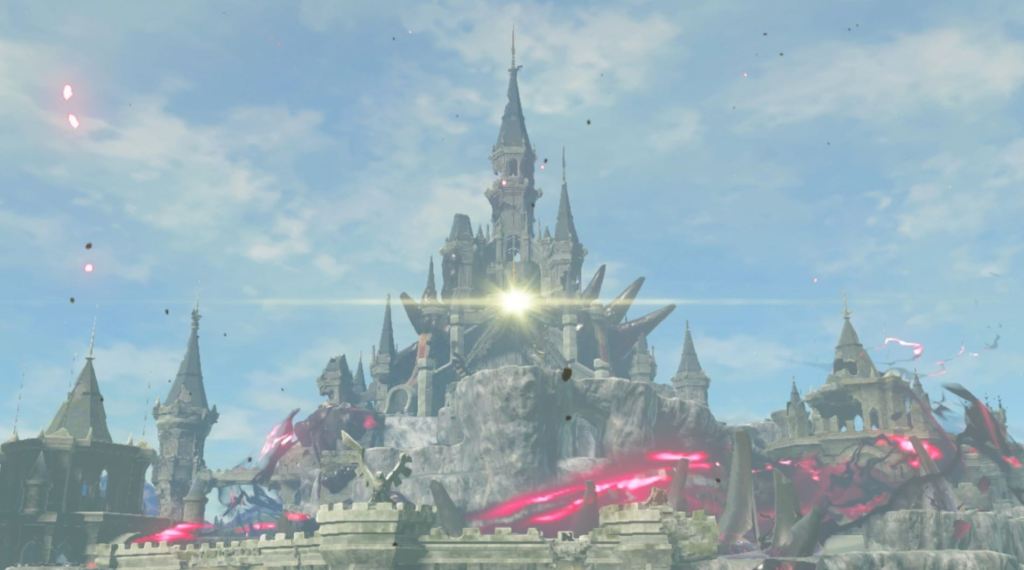
3. Hyrule Castle (The Legend of Zelda: Breath of the Wild)
Hyrule Castle is a centerpiece in many Zelda games and sometimes serves as a dungeon, but none of the many variations of that structure hold a candle to the version of Hyrule Castle seen in The Legend of Zelda: Breath of the Wild.
In Breath of the Wild, Hyrule Castle is a veritable fortress. The toughest enemies in the game patrol both the outskirts and interior, protecting a valuable trove of rare items and powerful weapons. The very thought of getting near it is a daunting prospect.
Moreover, Hyrule Castle epitomizes Breath of the Wild’s freeform nature. Unlike many other dungeons in Zelda titles, players can enter Hyrule Castle in any number of ways. Mind you, there is no one “safe” route. Each possible entrance caters to different playstyles. Plus, the dungeon really nails the “ruined castle” aesthetic. It really looks like a stronghold taken over by a formless evil and left to rot. Even the music sells that feeling by seamlessly combining the classic Hyrule Castle and Ganondorf leitmotifs.
Hyrule Castle in Breath of the Wild does everything in its power to make players feel like they are truly crawling into the belly of the beast, and it succeeds in invoking that feeling.
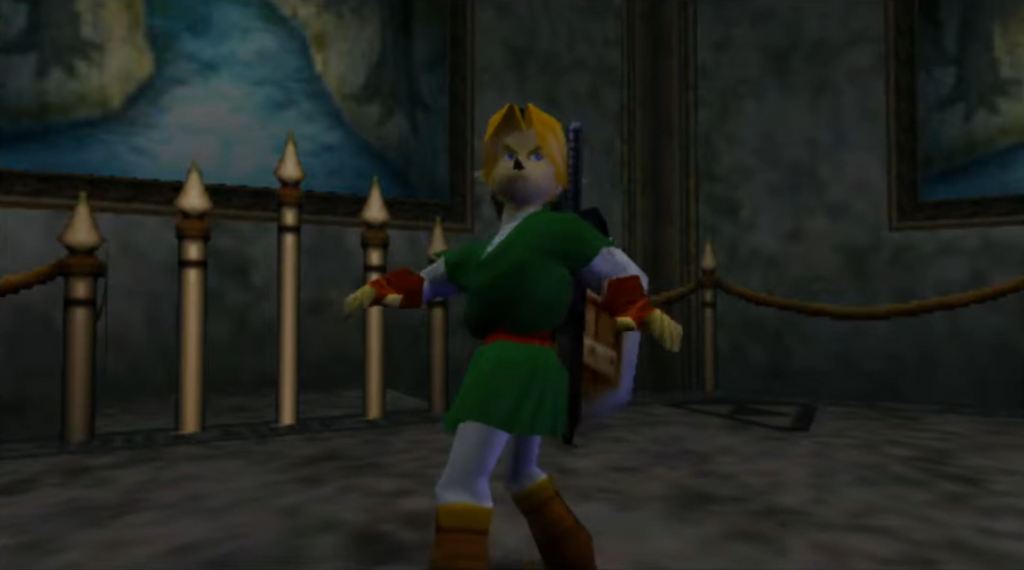
2. Forest Temple (The Legend of Zelda: The Ocarina of Time)
The Legend of Zelda: Ocarina of Time had its work cut out for it. As the franchise’s first foray into 3D, the game needed to demonstrate how the extra dimension could produce puzzles and dungeons never before seen in the franchise. Even though it wasn’t the first dungeon in the game, the Forest Temple did just that.
Forest Temple is one of the most memorable dungeons in the Zelda franchise for a number of reasons. Not only is it the first dungeon players get to visit as adult Link; it is one of the most visually striking dungeons any Zelda player had seen up until that point. Several corridors and rooms twist around each other in gravity-defying ways at the press of a button, and players are tasked with hunting down four Poe sisters who hide in paintings. These enemies left such an impression on fans that Nintendo reused that basic concept in later Zelda games.
The rest of the Forest Temple’s presentation is spot on and puts players on edge. Many rooms are infested with the ever-creepy Wall and Floormasters, and the music is this weird earworm of discordant notes. Plus, the Forest Temple ends with what appears to be a surprise boss battle against Ganondorf. In a creepy twist, though, it turns out to be a phantasmal doppelganger. It’s the perfect fakeout to close out an almost perfect dungeon.
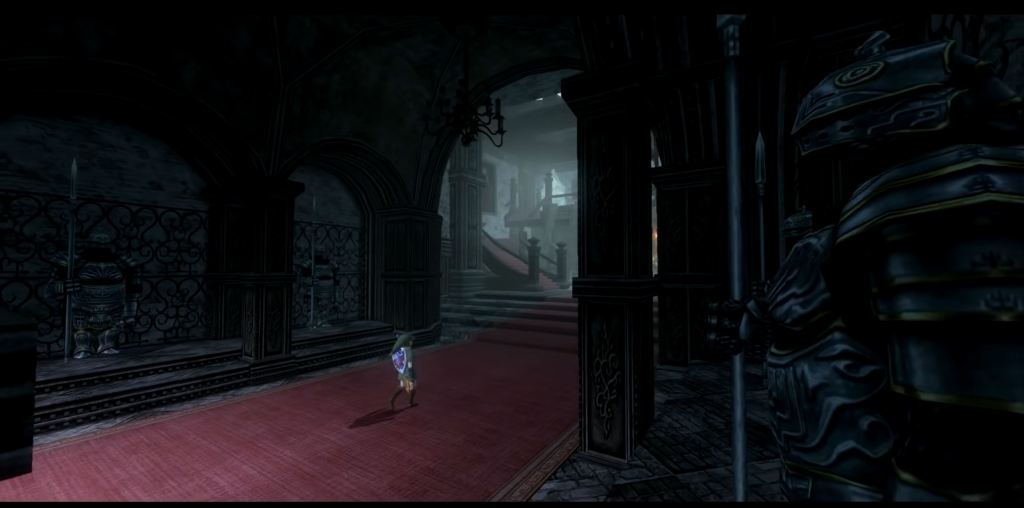
1. Snowpeak Ruins (The Legend of Zelda: Twilight Princess)
When you hear the word “dungeon” you probably think of an underground location, locked away from prying eyes and designed to imprison nasty monsters. The Legend of Zelda: Twilight Princess challenges that basic idea.
Snowpeak Ruins is nothing if not unique. Like most dungeons in the game, it is a ramshackle location that has fallen prey to the elements, but unlike other Zelda dungeons, it isn’t an inhospitable location. Yeto and Yeta the Yetis make this “dungeon” their home, and they will gladly help players navigate the mansion in return for a simple favor: helping them make soup.
Even though monsters and locked rooms infest the Snowpeak Ruins, the location is so calm and (relatively) inviting that it’s easy to see two Yeti living there. Plus, the boss arena is a warm-looking bedroom guarded by an adorable heart-shaped lock. Well, until the Twilight Mirror shard turns Yeta into the dungeon’s boss. It’s the kind of mood whiplash that’s as surprising as it is fitting, as it demonstrates the kind of power players are dealing with.
Snowpeak Ruins defies traditional Zelda dungeon aesthetics so much that it solidifies the location in players’ minds. Many of this dungeon’s mysteries remain unsolved.

